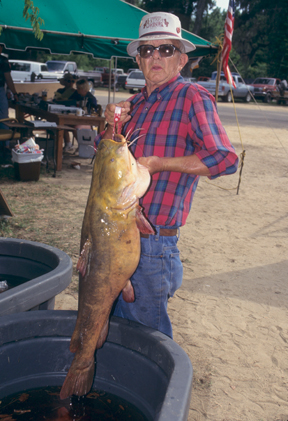
Non native fish populate most area waterways
By Stan Kirkland,
Florida Fish and Wildlife Conservation Commission
A Jackson County man fishing in the Apalachicola River near Chattahoochee in 1982 landed the strangest catfish he had ever seen. It turned out he had a flathead catfish, a species of catfish not native to the southeastern U.S.
Now, three decades later, flatheads are in every river in the Florida Panhandle from the Ochlockonee River west to the Escambia River. They are in the rivers by the thousands, a testament to their ability to thrive outside their native range.
Sometimes called shoeheads or Appaloosa cats, due to their flattened heads and mottled color, they are native to lakes and rivers of the Midwestern U. S. In fact, some anglers go after flatheads in the shallower waters of their native range by using their hands to grab the fish during spawning, a type of fishing called “noodling.”
The spread of flatheads to our local rivers has had an impact on other fish populations, according to Chris Paxton, regional fisheries biologist for the Florida Fish and Wildlife Conservation Commission (FWC).
“Smaller flatheads will go after crayfish but as these fish get up to several pounds they become live fish eaters,” he said. “They will literally eat anything smaller than they are that happens to swim by them. Species like bullheads and river redbreast bream are two species that have certainly been impacted.”
Paxton said some anglers are hoping that the FWC will come up with a “silver bullet” to reduce or eliminate flatheads. He said study projects in other states in the southeast indicate once flatheads are found in a waterway, they are there to stay.
If there’s a silver lining to the flathead saga, Paxton said it’s that the fish is good to eat. He said most anglers catch them using small live bream and fish when flatheads are actively feeding around daybreak , late in the day or at night.
Some communities on the Apalachicola River have even figured how to cash in on the flathead expansion by holding flathead fishing tournaments, offering cash money and trophies to the top participants.
Just how big flatheads will get in Florida waters is up for debate. In October 2011 Milton angler Eric Auston Jr. caught a 55.05 pound fish from the Yellow River and set a new Florida record in the process. In their native range they grow to over 100 pounds. Fisheries biologists say they will likely reach similar weights here.
